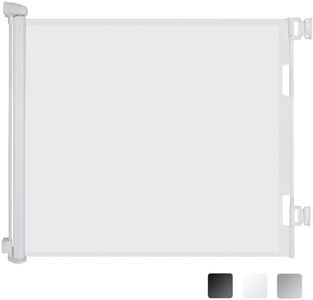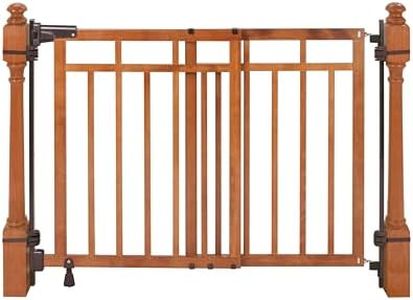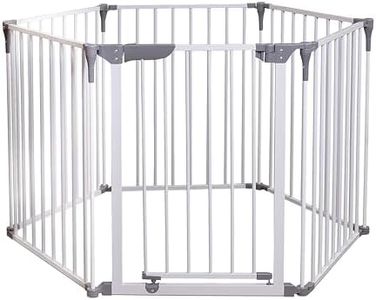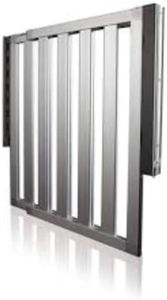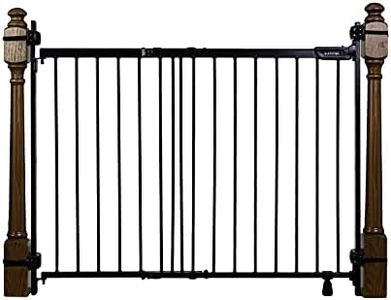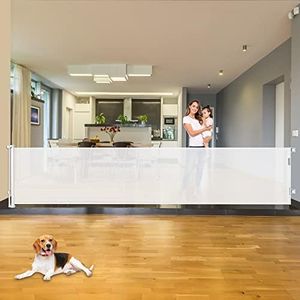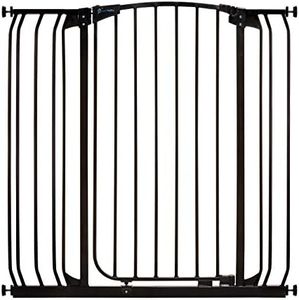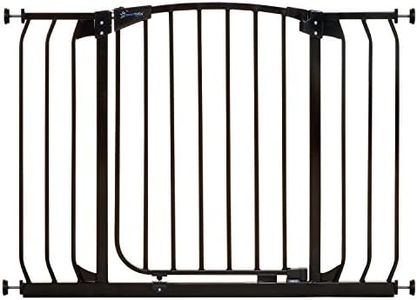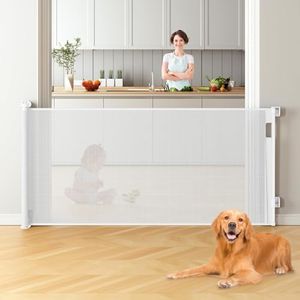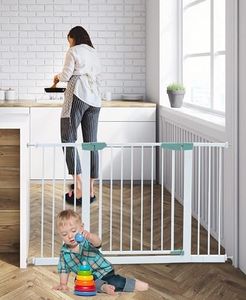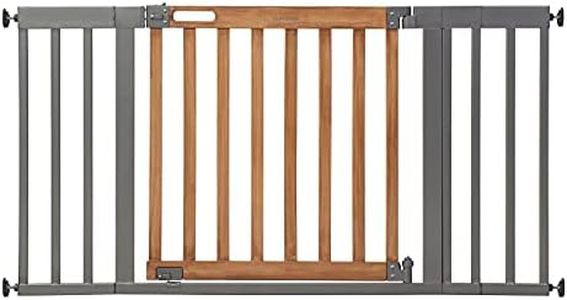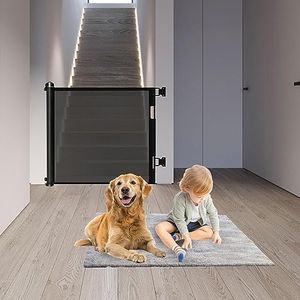We Use CookiesWe use cookies to enhance the security, performance,
functionality and for analytical and promotional activities. By continuing to browse this site you
are agreeing to our privacy policy
10 Best Baby Gates For Stairs
From leading brands and best sellers available on the web.Buying Guide for the Best Baby Gates For Stairs
Choosing the right baby gate for stairs is an important decision to keep your child safe at home. The primary goal is to prevent little ones from accessing stairways, which can be dangerous. When shopping for a baby gate, consider the place you’ll install it, how often you'll need to pass through, and what features will make your daily life easier while keeping your child protected. Think about the layout of your home, the materials you prefer, and how much convenience you need. Picking the best option is all about matching the gate’s features with your specific needs and setup.Mounting StyleThe way a baby gate attaches to your walls or banisters is called the mounting style. The two main types are pressure-mounted and hardware-mounted. Hardware-mounted gates are screwed directly into the wall or banister and are the safest option for the top of stairs because they are very secure and cannot be pushed over. Pressure-mounted gates use tension to stay in place and are easier to install and remove, but they are better suited for the bottom of stairs or between rooms because they can be dislodged with enough force. When choosing, consider where you’ll install the gate: for tops of stairs, always go with hardware-mounted; for other locations, pressure-mounted might be sufficient and more flexible.
Gate HeightGate height refers to how tall the baby gate is from the floor. Taller gates provide more security, especially as little ones grow and start climbing or when you have pets that may try to jump over. Typical gates are around 29–36 inches tall. For babies and toddlers, a standard height is usually enough, but if you have an especially adventurous child or a large dog, consider a taller gate to add an extra layer of safety. Your choice should reflect your child’s development and potential climbing skills.
Gate Width and AdjustabilityGate width is the size of the gate from one side to the other and determines whether it will fit over your stairway or doorway opening. Many gates are adjustable or include extension kits to fit wider spaces. Stairways can vary a lot in width, so measure your opening carefully before buying. If your stairway is unusually wide or narrow, look for gates with greater adjustability or compatible extensions. The right fit is crucial—a gate that doesn’t fit snugly isn’t safe.
MaterialBaby gates are commonly made from metal, wood, or plastic. Metal gates tend to be sturdy and durable, making them good for high-traffic areas or for families with pets. Wood can look more attractive and warm, fitting in with home decor, but may be more easily chewed or scratched. Plastic gates are lightweight and often less expensive but are generally not recommended for stairways due to potential strength issues. When picking a material, think about safety, durability, home aesthetics, and if you'll need to move or remove the gate often.
Opening and Locking MechanismThe way a gate opens and locks matters a lot for daily use. Some gates swing open like a door, others slide or lift up, and all should lock securely so small children can’t open them. Locking systems range from simple latches to double-action mechanisms that require coordinated steps to open. If you'll be carrying your child or other items through the gate regularly, look for an easy one-handed operation. Always check if the locking mechanism is childproof but still convenient for adults to use.
Swing Direction and Threshold BarSome gates swing in one direction, others in both, or you may want a gate that only opens away from the stairs to prevent dangerous falls. A threshold bar is a strip at the bottom of some gates; it can pose a trip hazard at the top of stairs. For stairs, choose a gate that swings away from the stairs and, ideally, does not have a bar across the bottom, or make sure the bar is low and easy to step over. Your choice should prioritize safety and ease of passage.
